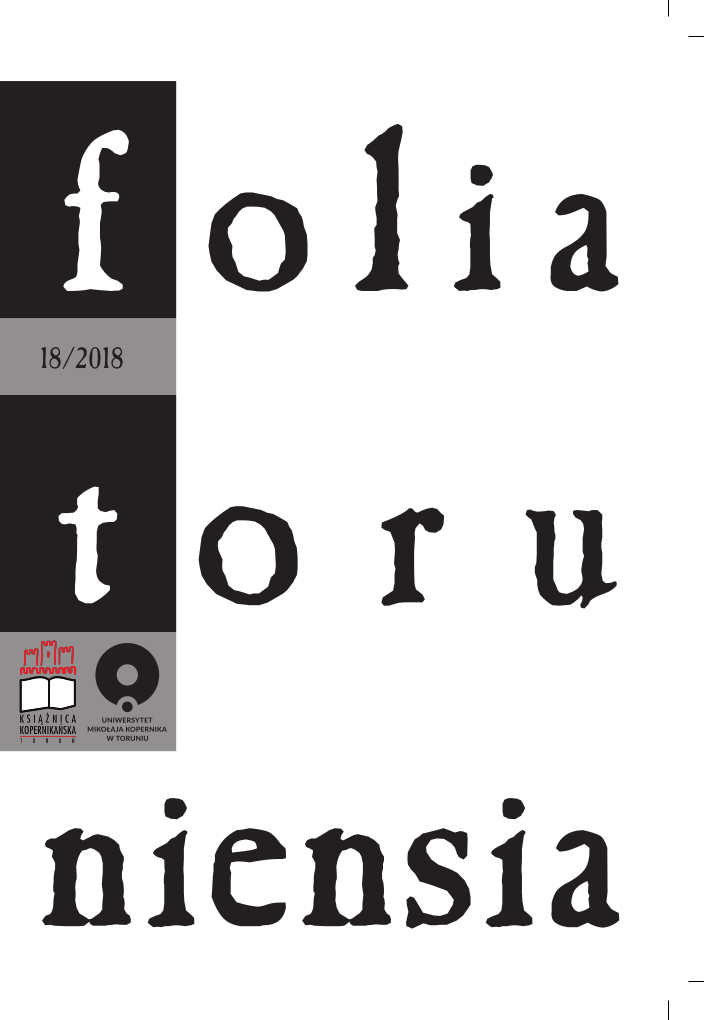Eyetracking research of Readability of Bibliographical Styles by the example of academic management systems
DOI:
https://doi.org/10.12775/FT.2019.004Parole chiave
eye tracking, bibliography, readability, legibility, bibliographic stylesAbstract
Aim: The aim of the study was to gain knowledge about the way in which students use the electronic bibliography when looking for their positions. These investigations are designed to indicate the most intuitive bibliographic description style from the student's level. It is also to contribute to the improvement of the aesthetics of the ways of publishing the subject bibliography presented in the didactic support services and in the electronic management systems of students and academic staff.
Research method: The study in question was conducted using a mobile eye tracker, operating in infrared technology and 60 Hz frequency, on the group of students of Information Architecture. In order to achieve a balanced degree of complexity for different bibliographic styles, the experiment, apart from using the eye tracker, also included a questionnaire concerning detailed questions in the field of particular elements of the bibliographic description. The study used the Vancuver style, Traditional Polish agreement with the norm (PN-ISO 690: 2002 and PN ISO 690 2) mixed and the style based only on network resources.
Results/Conclusions: These are pilot studies, and their results will be presented on the example of the USOS website, which is used at Nicolaus Copernicus University in Torun.
Riferimenti bibliografici
Bergstrom, Jennifer Romano, and Andrew Jonathan Schall. 2014. Eye tracking in user experience design. Amsterdam, Boston: Morgan Kaufmann.
Crosby, E. Martha, and W. Wesley Peterson. 1991. “Using Eye Movements to Classify Search Strategies”. Proceedings of the Human Factors Society Annual Meeting 35(20). https://doi.org/10.1177/154193129103502012.
Duchowski, T. Andrew. 2017. Eye Tracking Methodology. Theory and Practice. Cham: Springer International Publishing AG.
Freie Universität Berlin. 2019. “Home”. OGAMA. Accessed July 3, 2019. http://www.ogama.net.
Garczark-Bąk, Urszula. 2016. „Użyteczność badań eye trackingowych w pomiarze utajnionych determinant zachowań zakupowych nabywców”. Ekonometria 3(53): 54-71.
Holmqvist, Kenneth, Marcus Nystrom, Andersson Richard, and others. 2015. Eye Tracking: A Comprehensive Guide to Methods and Measures. Oxford: Oxford University Press.
Mazurek, Jolanta. 2011. „Czytelnik, użytkownik, klient, odbiorca w bibliotece cyfrowej… czyli KTO?” In Polskie Biblioteki Cyfrowe 2009 : materiały z konferencji zorganizowanej dnia 9 grudnia 2009 r., ed. by Cezary Mazurek, Maciej Stroiński, and Jan Węglarz, 35-44. Poznań: Ośrodek Wydawnictw Naukowych.
Rosenfeld, Louis, and Peter Morville. 2003. Architektura informacji w serwisach internetowych. Gliwice: Helion.
Stefaniak, Barbara. 1998. „Badania bibliometryczne, informetryczne, naukometryczne” In Informacja naukowa w Polsce: tradycja i nowoczesność, ed. by E. Ścibor, 198-199. Olsztyn: Wydawnictwo WSP.
The EyeTribe. 2019. “Our big mission”. The Eye Tribe. Accessed July 3, 2019. http://theeyetribe.com/theeyetribe.com/about/index.html.
The Internet Engineering Task Force (IETF). 2019. “RFC2616 – Hypertext Transfer Protocol -- HTTP/1.1”. IETF Documents. Accessed July 3, 2019. https://tools.ietf.org/html/rfc2616.
Tidwell, Jenifer. 2012. Projektowanie interfejsów: sprawdzone wzorce projektowe. Gliwice: Helion.
Uniwersytet Mikołaja Kopernika w Toruniu. 2019. „Witaj w systemie USOSweb Uniwersytetu Mikołaja Kopernika w Toruniu”. Uniwersytecki System Obsługi Studiów. Last modified September 18, 2019. https://usosweb.umk.pl/kontroler.php?_action=actionx:news/default.
Wade, J. Nicholas. 2010. “Pioneers of Eye Movement Research”. I-Perception 1(2): 33–68. https://doi.org/10.1068/i0389.
Wąsikowska, Barbara. 2014. The Application of Eye Tracking in Business. In Social Aspects of Business Informatics: Concepts and Applications, ed. by Andrzej Marciniak and Mikołaj Morzy, 71-86. Poznań: Wydawnictwo Nakom.
Zotero. 2019. “Zotero Style Repository”. Accessed July 3, 2019. https://www.zotero.org/styles.
Downloads
Pubblicato
Come citare
Fascicolo
Sezione
Licenza
Authors sign the license agreement, where authors have copyright but license exclusive rights in their article to the publisher. In this case authors have a range of rights, including:
- The right to share or reuse their article in the same ways permitted to third parties under the Creative Commons Attribution-NoDerivatives 4.0 (CC BY-ND 4.0) license. Following it, the author can "copy and redistribute the material in any medium or format for any purpose, even commercially. The licensor cannot revoke these freedoms as long as you follow the license terms."
- Authors retain patent, trademark and other intellectual property rights (including research data).
- Authors receive proper attribution and credit for the published work.
![]()
Stats
Number of views and downloads: 840
Number of citations: 0



